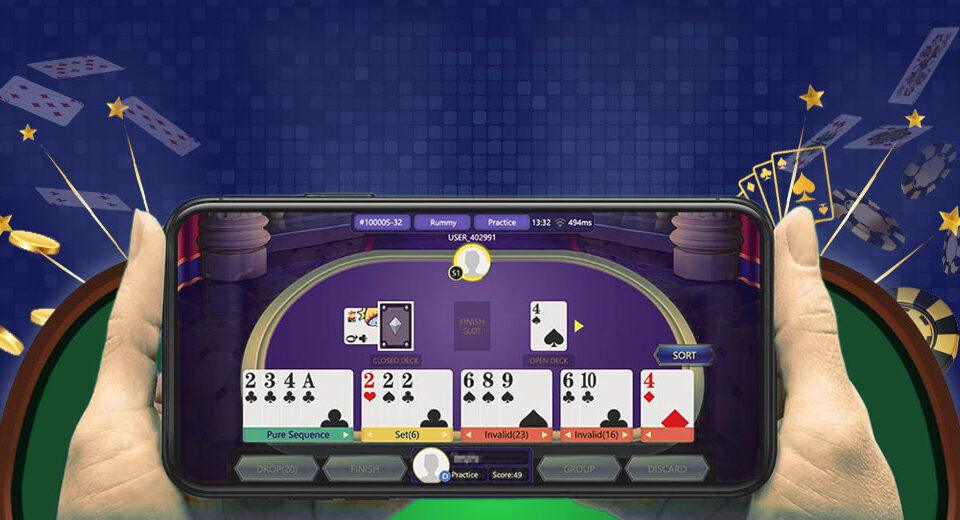How the Drop Option Changes the Game in Points Rummy
Points Rummy is widely regarded as the most dynamic and fast-paced version of the Indian rummy card game, where each game ends quickly and points carry direct value. In such a competitive setup, the drop option introduces a subtle but powerful layer of strategy. Whether taken at the very beginning or mid-game, dropping allows a player to cut losses, rethink approach, and sometimes even signal an underlying strategy. Understanding how to use the drop feature is critical for players who want to navigate the fast turns of online rummy game sessions with minimal damage and calculated risks.
1. Early Drop as a Tactical Exit
In Points Rummy, the early drop can serve as a smart defence mechanism. If your opening hand lacks even a partial sequence or if it’s spread across too many suits, taking an early drop allows you to minimise the loss to a minimal fixed penalty. Under Indian rummy rules, this early action costs far fewer points compared to getting caught with high-value cards at the end of the game.
Strategically, players should train themselves to recognise dead-end hands from the first draw itself. This builds a habit of evaluating rather than simply reacting. Over time, those who drop early with purpose end up saving far more points across multiple rounds.
2. Mid Drop Requires Split-Second Evaluation
The mid drop, taken after the first move, is slightly costlier than the early drop but still preferable to risking a full penalty. It’s especially useful when the game is clearly shifting in the opponent’s favour, such as when they begin drawing and discarding confidently, or when your own draws fail to improve the hand.
This kind of drop forces you to assess your card's potential versus the time left in the round. Holding onto high cards without any solid groupings, especially when no jokers are in sight, just increases risk. In Indian rummy online, mid-drop usage is common among seasoned players who would rather surrender a few points than the entire pot.
3. Drop as a Psychological Move
Beyond being a safety net, the drop can be used to mislead opponents or influence their behaviour. For instance, consistent early drops can make you appear cautious or weak, prompting opponents to take riskier plays, thinking you're not a threat. This image can later be flipped by staying in with stronger hands, catching them off guard.
Some players also drop not out of weakness but to avoid giving the opponent a quick victory. In situations where the rival is clearly building towards a declaration, dropping can deprive them of the satisfaction of finishing with a zero score while limiting your penalty.
4. Minimising Losses in High-Value Hands
Points Rummy is unforgiving when it comes to ungrouped face cards or high-value numbers like 10s. If you're holding a King, Queen, or Jack and the cards around them are unhelpful, it's worth considering the drop option before those values weigh down your score. You may learn to calculate the points or scores in the Indian Rummy game.
Mid-game, if two to three draws have failed to form a meaningful sequence and you’re still stuck with face cards, dropping becomes a damage control mechanism. Dropping instead of holding on helps protect your average point score across multiple games.
5. Reading Opponent Drops for Gameplay Clues
Observing how and when opponents drop can help shape your future moves. If a player drops after their first turn, it could suggest a weak hand or even a bluff. Multiple early drops from the same opponent may indicate a pattern of conservative play.
Alternatively, when a skilled opponent avoids dropping despite drawing multiple cards, they may be closer to a declaration than you think. Watching these behaviours in online rummy game formats gives clues about when to accelerate your sequence-building and when to switch to safer plays.
6. When Not to Drop: Holding a Salvageable Hand
It’s equally important to know when not to use the drop option. If you hold two cards towards a pure sequence or have a joker and at least one completed set, dropping may be premature. The temptation to exit early should be resisted if there’s a tangible path to completing your hand in the next couple of turns.
Experienced players in Indian rummy online matches often wait out one or two more draws before dropping - especially when only a few cards are needed to turn the game around. Calculated patience is as valuable as quick exits.
Conclusion: A smart way to protect your score and sharpen your overall strategy.
The drop feature in Points Rummy is more than a passive exit - it’s an intelligent decision-making tool that reduces losses and preserves your long-term performance. Whether used early to cut off a bad hand or mid-round to avoid heavy penalties, dropping reshapes the rhythm of a game and signals maturity in play. Observing how and when to drop - and when to hold - can help tilt rounds in your favour, especially when others take unnecessary risks. In indian rummy online, where speed and clarity of judgment are critical, mastering the drop option is a hallmark of strategic thinking and disciplined gameplay.
Conclusion - A compact format that rewards swift thinking and strong fundamentals
Points Rummy is ideal for players who enjoy brisk gameplay and appreciate skill-based decision-making. Understanding the format’s structure, scoring, and tactical nuances ensures you can consistently perform well in this single-deal format of IndianRummy. With the right focus and approach, mastering Points Rummy becomes a rewarding journey into strategic card gaming.




